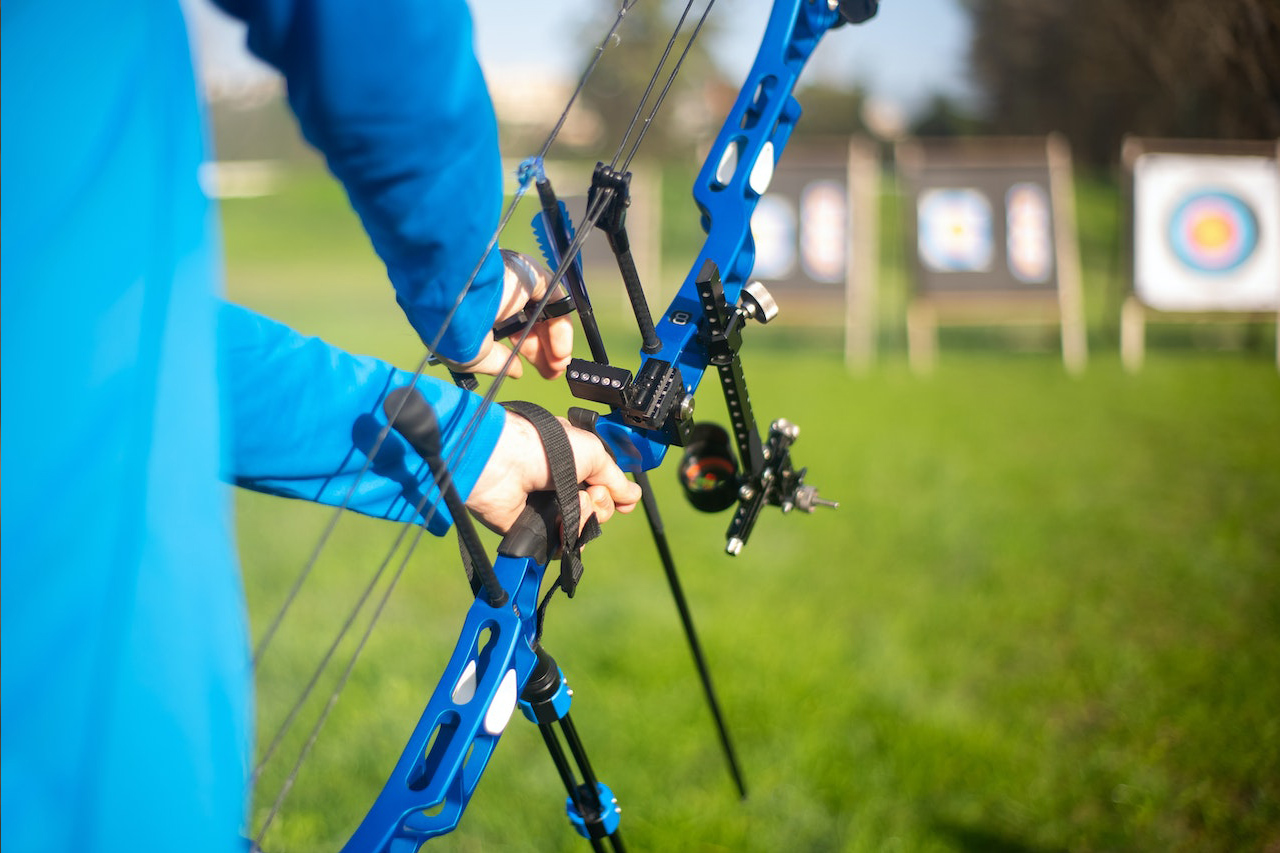
How fast is a 50 lb compound bow?
Knowing a bow’s speed requires a particular calculation with the following variables: draw weight, draw length, arrow weight, extra accessories, and release method. Therefore, there are no fixed fps for all 50 lb compound bows, but you may use an arrow speed calculator for a realistic result.
Beginner to Intermediate Hunters ALERT! Read This Before Purchasing Your Next Hunting Compound Bow

Bow Manufacturers Are Subliminally Influencing You to Desire "Fast-er" Compound Bow Speeds...
Inside Are the Other 3 Considerations They Would Rather You Not Know
Have you ever wondered why IBO Speed is almost always mentioned in compound bow specs?
Speed Sells Bows.
The International Bowhunters Organization (IBO) is considered a standard,
and so manufacturers are ever-so-slightly tugging at your primal desire to tell your peers, "I have the latest IBO X-fps bow"--
like Apple's yearly iPhone models OR Intel's yearly faster CPUs.
Don't get me wrong, there is nothing wrong with wanting those--
What's wrong is wanting them for the wrong reasons.
And if you have hunter friends who laugh behind your back--
for being duped by bow manufacturers,
Here are the Other 3 Considerations when looking for a 'fast' bow...
That'll make you look like you know your stuff:
- Noise: increased vibrations create a sound wave that'll spook your prey, making you leave the hunt empty-handed. You'll need to invest in silencers and dampeners.
- Less Forgiving: Mistakes in your form will be amplified with faster bows, decreasing your accuracy. Emphasis should be given to proper training and practice, not just upgrades to gear.
- Arrow Selection: Matching the correct arrow spine and weight to your fast bow is crucial for optimal performance and safety. Mismatched arrows can damage the bow or fly erratically.
Prioritizing safety and accuracy should always come first when choosing any hunting equipment--
When you hunt, you want ethical shots, not wounding prey and making them suffer--
You Need to Get the Job Done.
I did all that when I bought the Sanlida Archery Dragon X8 RTH Package.
It was cheap enough for me to upgrade the accessories to satisfy the 'Considerations' above to my taste.
And here's the other stuff that sealed the deal for me:
- it has 5-star reviews from hundreds of customers,
- it is a #2 Amazon Bestseller for Compound Bows,
- it shoots arrows at 310 feet per second (IBO),
- has a fully adjustable draw weight (0-70 lbs without going to your local shop),
AND has a Limited Lifetime Warranty.
Once you get your hands on the Sanlida Archery Dragon X8,
your friends may be laughing at you on the outside,
but deep inside, they're jealous--
For you having a Fast Bow that Actually Performs!
Get access to the bow I bought in the table below and in this link:
Sanlida Archery Dragon X8 RTH Package
Sanlida Archery Dragon X8 RTH
- Large range of adjustable draw length 18-31", draw weight 0 -70 lbs without needing a bow press. A bow for all ages and skill levels.
- Limited Lifetime Warranty on main parts after your registration within 30 days of purchase.
- Specifications: Axle-to-Axle 30", Brace Height 6.6", Draw Weight 0 to 70 LBS, Draw Length 18" to 31", IBO Speed 310FPS, Net Weight 3.8 LBS, String Length 58.13", Cable Length 32.23".
- Material: CNC machined cams and modules with the 6061 T6 aluminum. Bowstrings and cables are made of BCY-D97
Wanting to know a bow’s speed is one of the most exciting things that archers and hunters would love to know, especially for some who see it as a vital factor that helps them to achieve successful shots. However, determining how fast a bow is can be pretty complicated.
You may be curious about how fast a compound bow can shoot. For those eyeing to use a 50 lb compound bow, you have to know that you must follow a particular equation to come up with a definite result.
Please note that the bow speed calculation applies to all bows, regardless of the draw weight and bow type.
Before anything else, you must take note of this first:
- Compound bow manufacturers mostly come up with an advertised rate of speed, which is not the speed that the arrow travels when it hits the target. Instead, the advertised speed introduced is the speed at which the arrow travels directly after being released from the bowstring.
Hence, it is a compound bow’s speed at point-blank range. It means that by the time the arrow approaches the target, it goes much slower than the advertised fps.
Moreover, most compound bows adhere to the International Bowhunting Organization (IBO) speed ratings standard:
- 70 lb draw weight
- 30 inches draw length
- 350-grain arrow weight

Diamond Archery Edge XT
- A strategically engineered caged riser design increases stability and accuracy.
- Quad limb design increases stability at full draw for shot-to-shot consistent accuracy.
- No separate modules or cams needed, DIY draw length adjustments in minutes.
- 50 lbs of Draw weight and 12.5 inches of draw length adjustment.
Manufacturers have to test their bows using the mandated speed ratings above to ensure that all ratings are consistent from one company to the other.
Therefore, you can say that the advertised speed is not a realistic calculation of how fast a bow is since it is also most likely tested in a tightly controlled indoor environment.
Suppose you want to figure out a compound bow’s actual speed. In that case, you have to consider and understand the following variables that are part of the equation before you start manually calculating:
Draw weight
As you have noticed, IBO-certified compound bows underwent testing at a 70 lb draw weight, which is unrealistic because not all archers and hunters have a draw weight of 70 lb.
Moreover, hunters use 70 lb bows primarily to take down big-game hunting animals such as moose, bear, and elk. Thus, if you have no plan to enter the big game hunting season, you won’t likely see the need to use a 70 lb bow.
Most beginners and those who aren’t fit to pull back a 70 lb bow use bows with lower poundage.
For those who shoot at a draw weight lesser than 70 lb, you can expect to lose approximately 15 to 20 fps for every 10 lb draw weight reduction.
An excellent example is that if you have a 50-pound compound bow, your fps will be 40 fps less than a 70-pound compound bow.
The explanation is that lower draw weight means a lower speed rate. Therefore, you can never expect your bow to shoot so fast unless you go for a higher draw weight.
Draw length
Another one is the draw length, which is the distance that you can pull the bow string from its resting position to full draw, which helps your arrow to propel.
IBO has a 30-inch standard draw length, which is not unanimous among bows because draw lengths differ for each user.
Bear Archery Royale Ready to Hunt Compound Bow
- Versatile: Extremely versatile bow that can be easily adjusted
- Adjustable: Adjustable from 12 to 27 inches in draw length and from 5 to 50 lbs. peak draw weight
- Ready To Hunt: Ready to hunt bow comes equipped with Trophy Ridge and Fletcher Archery accessories
- Lightweight: Weighs only 2.7 lbs. bow only and 3.3 lbs. with included accessories
- Speed: Fires arrows at 290 feet per second
Since not all have a 30-inch draw length, you must know that in every 1-inch reduction, your bow will lose ten fps of arrow speed. On the other hand, your arrow speed will get an additional ten fps for every 1-inch added to your draw length.
For instance, a 28″ draw length faces a 20 fps reduction. Meanwhile, your bow will have an additional 20 fps if you have a 32″ draw length.
Therefore, the higher your draw length, the higher the speed.
Arrow weight
Arrow weight has always been associated with speed because it can affect your bow’s fps. It is important to note that arrows are available in numerous materials, such as carbon, fiberglass, wood, aluminum, etc.
Since every arrow material has a different weight, determining a bow’s speed isn’t tied up to only one arrow weight.
Some archers use arrows with 350 grains, while some use heavier ones like 425 to 500 grains. Even though heavier arrows promise deeper penetration and power, they decrease speed, wherein some hunters hesitate because they don’t want to lose even a bit of their bow’s fps.
If you don’t mind sacrificing speed for better penetration power, please note that for every 5-grain weight added to your arrow, you will likely lose 1.5 fps.
Although it doesn’t seem much, if you compute it, you’ll see that the accumulated deduction is something you should not ignore.
For example, if you decide to use a 425-grain arrow, expect to lose approximately 22 fps.
Extra accessories
Aside from the three main variables above, extra accessories attached to your bow can also affect its speed. There is no denying that sometimes archers and hunters need to use additional accessories like D-loop, string silencer, and bow sight to shoot better.
However, the more accessories you attach to your bow, the more fps you lose. Since accessories come in different sizes and weights, it is difficult to determine the exact fps reduction.
PSE Archery Compound Bow Lineup 2023
Innovation: Pioneering features like FDS for laser-sharp accuracy and diverse cam systems to tailor performance to your style.
Performance: Blistering speed with high IBO ratings, a hunter's dream for downrange dominance.
Versatility: From top-tier Omen flagships to beginner-friendly Uprising models, PSE caters to every archer's aspirations and budget.
Durability: Built to last. PSE bows boast rock-solid construction, ensuring years of dependable service in the field or on the range.
Beyond the basics: PSE doesn't stop there. Expect a smooth draw cycle, vibration-dampening design, and intuitive adjustability for a truly satisfying shooting experience.
Despite this, you can expect your bow to lose around 5 to 6 fps.
Method of release
You must know that an IBO-certified bow uses an automated shooting machine to release the arrow from the bowstring with absolute perfection.
Even though doing so provides accurate readings, people shoot bows in reality, not the automated machine, which presents a somewhat inaccurate speed result instead of a realistic one.
Therefore, a few fps likely get knocked off every time you shoot compared to an automated machine. That’s why you’ll have to subtract about 2 to 3 fps for such reason.
Based on the variables explained, you can never expect your bow to match the advertised speed and will have to calculate it manually, like the example below:
Supposed you have the following:
- compound bow 50 lb draw weight
- 28″ draw length
- 425-grain arrow weight
- installed extra accessories
- non-automated machine release method
Here are the estimations to expect:
- 50 lb compound bow: you’ll lose 40 fps
- 28″ draw length: you’ll lose 20 fps
- 425-grain arrow weight: you’ll lose 22 fps
- Installed extra accessories: you’ll lose five fps.
- Non-automated machine release method: you’ll lose three fps
Compute all the fps lost: 40 + 20 + 22 + 5 + 3 = 90 fps. To get your 50 lb compound bow’s actual fps, subtract the total fps lost with 320 fps, which is as follows:
320 – 90 = 230 fps – This is how fast your 50 lb compound bow is considering the variables assumed above.
Bear Archery Compound Bows Curated by Specialists
There are more than a handful of models to choose from for under $1000.
Check out the most dependable and modifiable compound bows in the market. Bear Archery's compound bows stand out with their extraordinary adjustability and customizability, offering great value for the price.
However, the example above is only an estimate and doesn’t apply to every 50 lb compound bow. It is only a guide to help you how to compute your own bow’s speed.
Thus, it would be best not to set your expectations too high and always refer to the variables mentioned, producing a more refined fps result unique to your 50 lb compound bow.
Contents
What’s the fastest compound bow?
Xpedition Archery’s Smoke is the fastest compound bow with an IBO rating of 370 fps, followed by APA King Cobra DG with 365 fps and PSE Expedite NXT with 360 fps.
Shooting a fast compound bow will leave you in awe, thanks to the consecutive development of high-performance compound bows in the market.
Manufacturers never disappoint in releasing more and more high-speed compound bows, beating the previous fastest one in the market every year. If you are looking for the quickest compound bow to purchase, you can never go wrong with Xpedition Archery’s Smoke.
It is the company’s limited edition and was announced to be the fastest they ever developed. It has beaten other manufacturers in becoming the quickest compound bow to date.
Xpedition Archery Smoke’s official IBO rating is 370 fps, which guarantees impressive speed that archers and hunters would want.
The model also has a smoked finish and is available in draw lengths ranging from 28″ to 30″. Another great thing about Xpedition Archery’s Smoke compound bow is its ultra-smooth and aggressive hybrid cam system with a rock-solid back wall.
It also has a 32-inch axle-to-axle design with Xpedition Archery’s stable X-Lock limb pockets and Energy Transfer System (ETS) cable system, which ensures excellent performance and unrivaled efficiency.
Besides Xpedition Archery Smoke, you can also check the other high-speed compound bows that have the closest speed to the former:
- APA King Cobra DG – boasting 365 fps
- PSE Xpedite NXT – 360 fps
- Bowtech SR350 – 350 fps
- Hoyt Carbon RX Twin Turbo – 350 fps
Listed above are the fps based on the official IBO ratings for each model. Nevertheless, it is no question that Xpedition Archery Smoke is now the fastest compound bow.
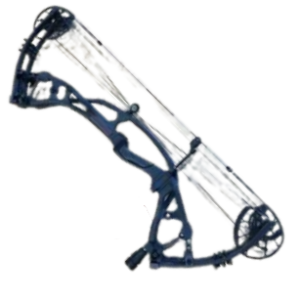
Hoyt Carbon RX Twin Turbo
- Patented cams for a smooth draw cycle and 350 FPS.
- Dual Shock Pro tech for optimal silence and accuracy.
- Carbon fiber 7x energy absorption vs. aluminum.
- In-Line mounting allows for direct accessorization.
- 208x enhanced insulation: you're warm during frigid hunts.
- Shot Stop stabilizer for unmatched stability and control.
What does the IBO rating mean?
The establishment of the IBO rating is to provide a standard metric that acts as a guide to which manufacturers must comply to support every bow model’s speed claims.
Bow manufacturers have long been outdoing one another in the arena of speed. The demand for high-speed bows has existed in the market since then, and manufacturers are under enormous pressure to satisfy consumers and attract business money.
As a result, more manufacturers are claiming without a proper standard universal basis to support their claims, which can leave consumers confused and unsure who to trust and where to buy.
Because of such issues, the International Bowhunting Organization came up with a mandated speed testing standard that manufacturers should use if they want to officiate their bow speed claims.
It prevents false and inflated claims that protect consumers and help them be confident in entering the bowhunting and archery industry. With the IBO rating, it is now easy to determine the fastest bow currently available in the market, which is an excellent advantage for those seeking to use high-speed bows.
Aside from the International Bowhunting Organization’s rating, another measurement standard is arising: the ATA.
ATA stands for Archery Trade Association and offers bow standards similar to IBO’s. Their ATA Speed also records and determines the speeds of bows across various manufacturers. It also provides an adequate description of a bow’s capabilities to consumers.
Compared to the IBO rating, ATA Speed relies heavily on the bow’s set draw weight, arrow weight, and draw length, making it a more reliable representation of actual bow speeds.
However, the IBO rating is still the most commonly used bow speed testing standard because it includes several variables that apply to a fully equipped bow under normal circumstances.
Thus, you can see some manufacturers that list ATA standards on their bows, while some only list IBO and others include both.
Nevertheless, whichever one gets included, they are both legal bow speed standards of measurement that ease consumer worries and uncertainties when looking for a bow’s speed claim.
Many variables influence a compound bow’s speed, making it hard for people to know how fast a compound bow can be, including a 50 lb compound bow. On the bright side, you can always look for the bow’s IBO rating and ATA speed for an official estimate.
Nonetheless, suppose you are dead set on finding your compound bow’s realistic speed. In that case, you can always use an arrow speed calculator or manually calculate it by first identifying its draw weight, draw length, arrow weight, release method, and attached extra accessories.
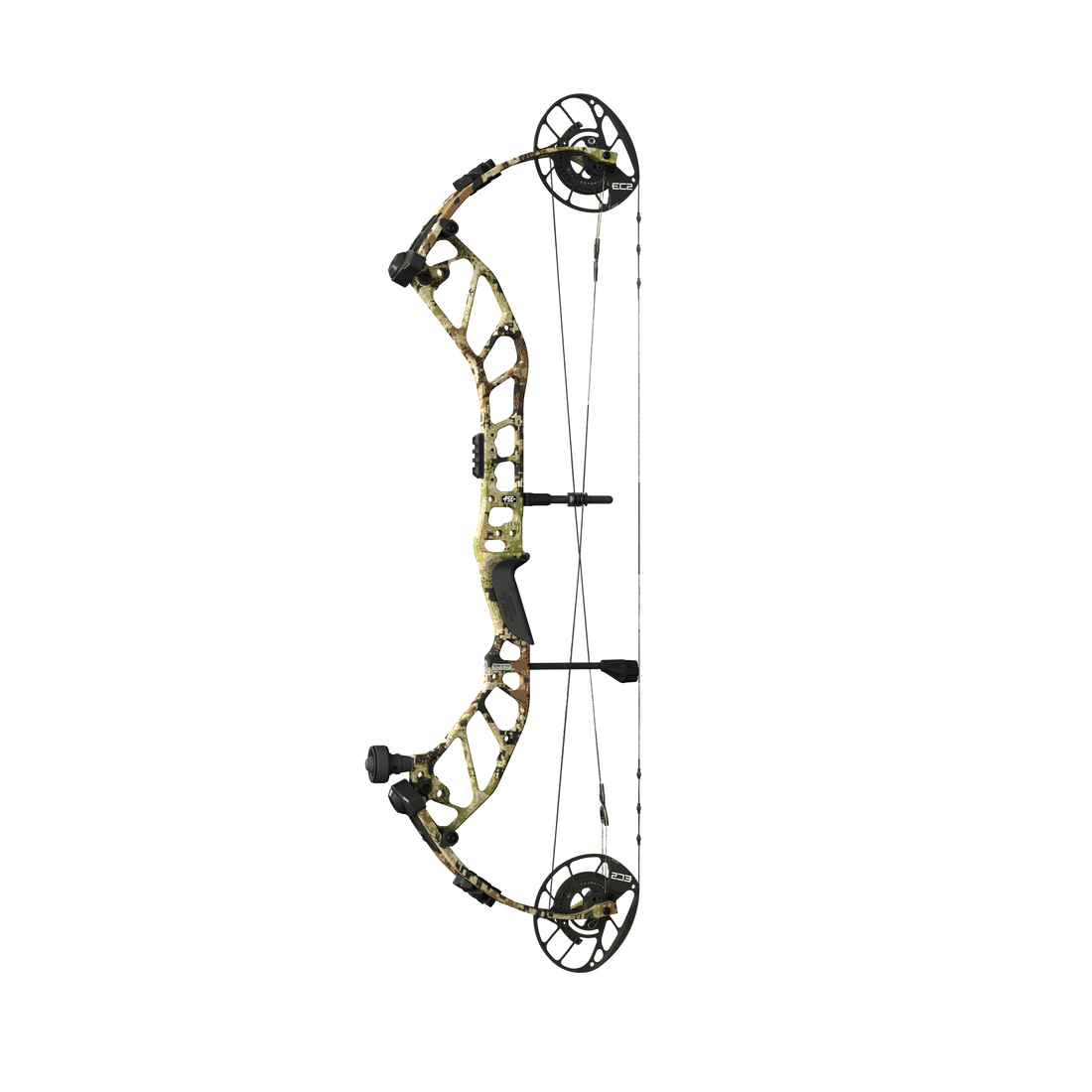
PSE Omen
- Blazing 356 fps, reduced draw effort
- Unparalleled stability, dynamic brace height
- E2/EC2 cams maximize performance
- Most stable, consistent shooting experience
- Engineered for peak performance, a pleasure to shoot





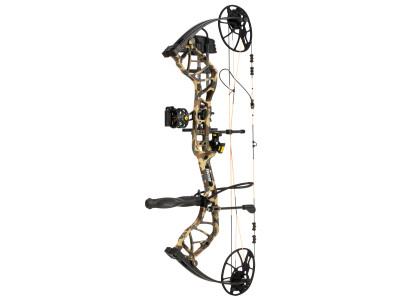
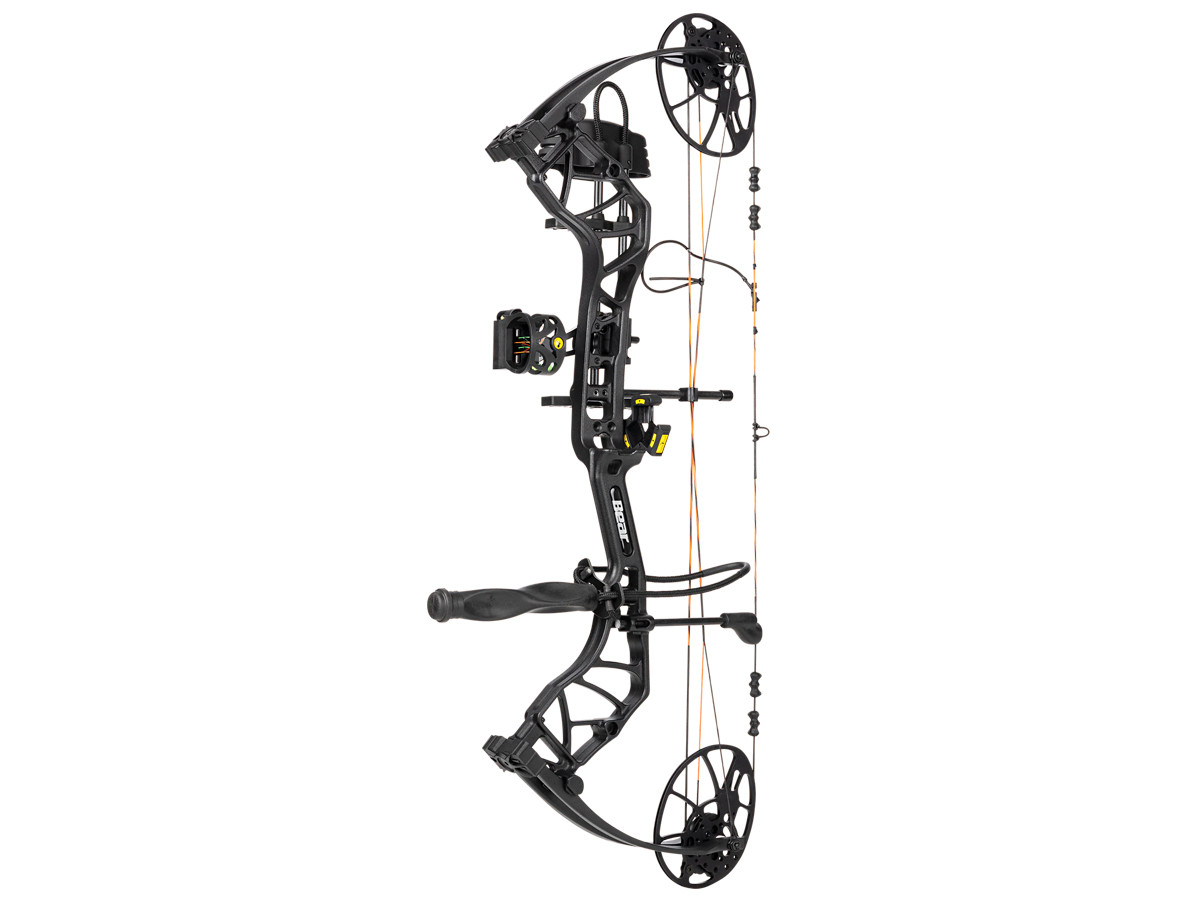
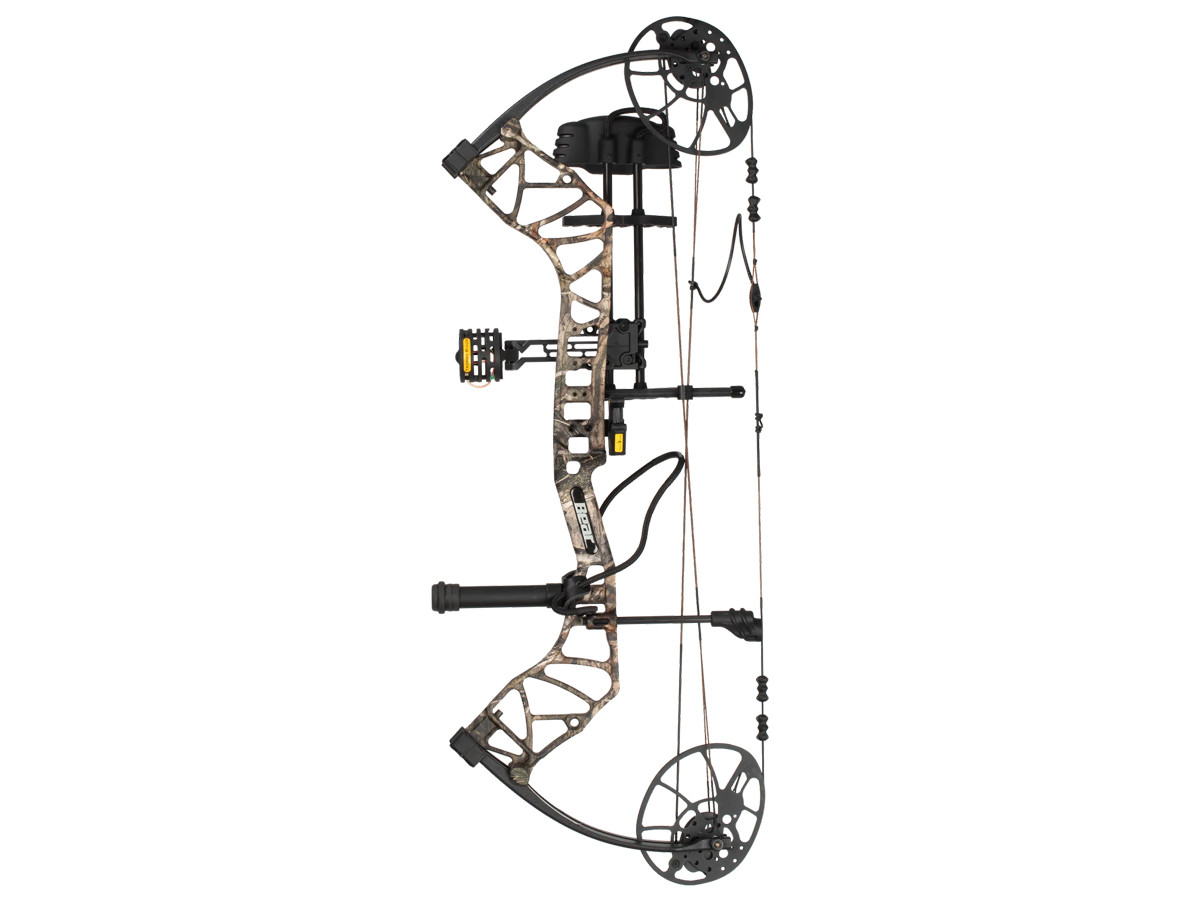

Leave a Reply